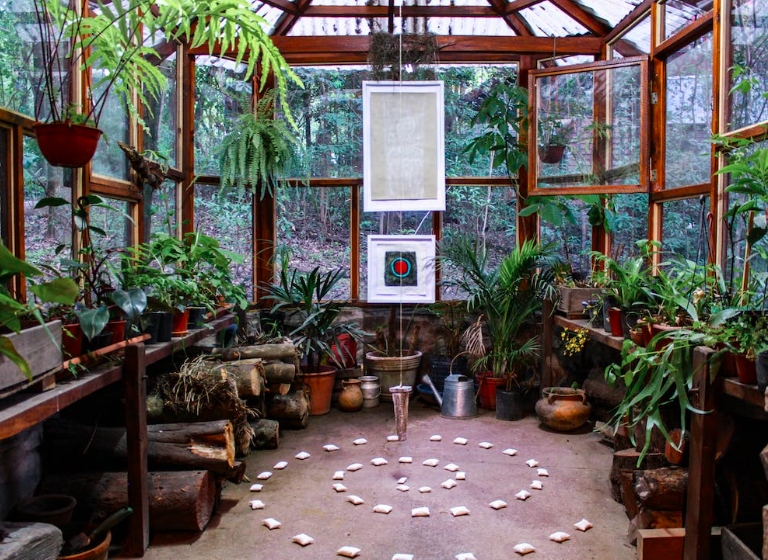Container gardening is a great way to bring the beauty of nature into your home or garden space. It is a form of gardening where plants are grown in containers, such as pots, baskets, or troughs. Container gardening is a great way to create a lush, vibrant garden in any size space, and it can be a great way to add a splash of color and personality to any outdoor or indoor living space.
Green Your Space: The Ultimate Guide to Container Gardening is a comprehensive guide to help you create a beautiful and thriving container garden. It is designed to provide an overview of the basics of container gardening, from choosing the right containers and soil, to selecting the best plants for your environment, and creating a plan for your garden. This guide also offers advice on how to maintain a healthy and productive container garden, including tips on how to water and fertilize your plants, and how to deal with pests. In addition, the guide offers advice on how to design and decorate your container garden to make it truly unique and enjoyable to look at. Finally, the guide offers plenty of ideas and inspiration to help you create the garden of your dreams.
Green Your Space: The Ultimate Guide to Container Gardening is designed to help you create the perfect container garden that is both beautiful and productive. Whether you are a beginner or a seasoned gardener, this guide will provide you with the knowledge and resources you need to create a thriving container garden. With the help of this guide, you can learn how to create a stunning garden that will be the envy of your neighbors.

Choosing Containers and Soil
Types of Containers for Container Gardening
Container gardening is becoming increasingly popular as it allows people to grow plants in small spaces. Containers come in a variety of shapes, sizes, and materials that can accommodate any size garden space. The most popular container materials are plastic, clay, terracotta, ceramic, metal, and wood. Plastic is lightweight and easy to move, while ceramic and terracotta are more durable and have a classic look. Metal is a great choice for a modern garden, while wood adds a rustic touch.
Considerations When Choosing Containers
When selecting a container for container gardening, there are a few factors to consider. First, consider the size of the container. Containers that are too small may not be able to support the roots of certain plants, while containers that are too large may not be able to be moved. Additionally, the material of the container should be taken into consideration. Plastic is lightweight, but may not be as durable as clay or terracotta.
Best Types of Soil for Container Gardening
The type of soil used in container gardening is just as important as the container itself. Soil that is too heavy or too light can inhibit plant growth. For container gardening, it is best to use a potting mix that is lightweight and drains well. Potting mixes are usually a blend of peat moss, vermiculite, and perlite. These ingredients allow for proper drainage and aeration, while also providing necessary nutrients for plant growth. Additionally, it is important to fertilize the soil regularly to provide additional nutrients for the plants.
Container gardening is a great way to grow plants in small spaces. When selecting containers and soil for container gardening, it is important to consider the size and material of the container, as well as the type of soil that is best suited for the plants. By taking these factors into consideration, gardeners can ensure that their plants will have the best environment for growth.
Selecting Plants
Types of Plants Suitable for Container Gardening
Container gardening is a great way to bring a little bit of nature indoors or to your patio. This type of gardening allows you to enjoy the beauty of plants and flowers in a confined space. There are a variety of plants suitable for container gardening, including both flowering and non-flowering plants. Some of the most popular plants for container gardening include flowering annuals like marigolds, petunias, and impatiens, as well as perennial plants like hostas, ferns, and succulents.
Factors to Consider When Selecting Plants
When selecting plants for container gardening, there are a few important factors to consider. First, you should consider the size and shape of the container you plan to use. This will determine the size and type of plants you will be able to grow. You should also consider the amount of sunlight the container will receive, as this will determine what type of plants will thrive in the container. Lastly, consider the amount of water and fertilizer the plants will need and make sure the container can accommodate these needs.
Tips for Mixing and Matching Plants in Containers
Mixing and matching plants in containers can be a fun and creative way to create a beautiful and unique container garden. When mixing and matching plants, consider the texture and color of the leaves and flowers, as well as the size and shape of the plants. Try to create a balance of textures and colors, and use plants of varying heights to add interest. Make sure to use plants that have similar needs and requirements in terms of sunlight, water, and fertilizer. Lastly, consider adding a few accents and accessories to complete the look of your container garden.
Caring for Container Gardens
Watering and Fertilizing Container Gardens
1. Watering
Container gardens require a lot of water, as the water in the soil is not retained for long due to their small size. It’s important to check the soil for moisture regularly and water when necessary. If the soil is dry, water until it is saturated. Overwatering poses its own problems, so it’s important to make sure that the soil isn’t too wet.
2. Fertilizing
Fertilizing container gardens is important for maintaining healthy plants. A balanced fertilizer such as a 10-10-10 should be used, as this will provide the necessary nutrients for the plants. Fertilize every few weeks, depending on the type of plant. Always read the instructions on the fertilizer package to ensure the correct amount is used.
Dealing with Pests and Diseases
1. Pests
Pests can be a problem in container gardens. Common pests include aphids, whiteflies, and spider mites, which can cause damage to the plants. To get rid of these pests, use an insecticide or organic pest control methods.
2. Diseases
Diseases can also be a problem in container gardens. Common diseases include powdery mildew, root rot, and blight. To prevent these diseases, make sure the plants are receiving the proper amount of water, sunlight, and nutrients. If the plants become infected, use a fungicide to get rid of the disease.
Tips for Maintaining Healthy Container Gardens
1. Choose the Right Container
The type of container you use can have a big impact on the health of your container garden. Choose a container that has good drainage and is large enough for the plants you’re growing.
2. Use the Right Soil
The type of soil you use can also affect the health of your plants. Make sure to use a potting soil that is designed for container gardens. This type of soil will provide the necessary nutrients and drainage for your plants.
3. Provide Adequate Light
Make sure that your container garden is receiving enough light. If the plants are not getting enough light, they will not be able to grow properly. Place the containers in a sunny spot and rotate them to ensure they are getting the proper amount of light.
4. Monitor Temperature
Temperature is another important factor to consider when caring for a container garden. Make sure to keep the plants away from drafts and provide protection from extreme temperatures.
5. Regularly Check for Pests and Diseases
Regularly check for pests and diseases. If you notice any signs of pests or diseases, take action quickly to prevent further damage.
Designing Your Container Garden
Tips for Designing Your Container Garden
Creating a visually appealing container garden starts with having a plan. Consider the size of the container, the type of plants you want to use, and the overall aesthetic you are trying to achieve. For example, you may want to create a container garden that is a mix of annuals and perennials, or a single type of plant like a cactus. Additionally, it is important to select a container that is the right size for your plants and the overall look you are going for.
When it comes to the principles of container garden design, it’s important to think about the form and function of the container. Utilizing containers with different heights and shapes will give your garden a unique look. You can also use dividers within the container to create sections for specific plants. In addition, make sure to consider the environment that the container will be in to ensure that the plants receive enough sunlight and water.
There are many examples of well-designed container gardens. For instance, some gardeners like to create a layered effect by planting different types of plants in the same container. This can be done by layering plants in a tall container, or by planting shorter plants in front and taller plants in the back of a shorter container. Additionally, you can add decorative elements such as stones, gravel, or driftwood to add texture and interest to the container. Finally, you can also incorporate vertical elements like trellises or stakes to give your garden an added dimension.
Overall, designing a visually appealing container garden requires careful planning and consideration of the environment in which it will be placed. Utilizing different sizes and shapes of containers, planting a variety of plants, and adding decorative elements can help to create a unique and stunning container garden. With a bit of imagination and creativity, you can create a stunning container garden that will be the envy of your neighbors.
Container Garden Projects
DIY Container Garden Projects for Beginners:
Container gardens are a great way for beginners to get started in gardening. They are easy to maintain, require very little space, and can be moved around easily. Some of the most popular beginner projects include: building and planting a window box, making a hanging basket, or creating a terrarium.
Ideas for Creative and Unique Container Gardens:
Container gardens are a great way to add a touch of personality to your outdoor space. There are many creative and unique ideas for container gardens that range from repurposing old items, such as vintage teacups, to creating a vertical garden with potted herbs. Other ideas include creating a living wall, making a terrarium, or even planting an edible garden in a raised bed or container.
Step-by-Step Instructions for Building and Planting Container Gardens:
When building and planting a container garden, there are a few steps to follow to ensure success. First, choose the right size container for the plants you want to grow. Then, prepare the soil, making sure to add the necessary nutrients for the plants. Lastly, carefully select and place the plants in the container, making sure to leave enough space for them to grow and spread. Once everything is in place, water the plants regularly and enjoy the results!

Container Gardening for Specific Purposes
Container Gardening for Small Spaces
Container gardening is a great solution for small spaces. Container gardening allows you to make use of any small space, such as a balcony, patio or even a windowsill, to create a beautiful garden. With container gardening, you can easily mix and match plants and create a unique garden that fits your own style. You can also take advantage of vertical space by using hanging planters or shelves. With the right potting soil and plants, you can transform any small space into a vibrant and thriving garden.
Container Gardening for Edible Plants
Container gardening is a great way to grow edible plants in small spaces. You can easily grow fruits, vegetables, herbs and spices in containers. Container gardens are especially beneficial to those who live in apartments or condos with limited outdoor space. The key to successful edible container gardening is to choose the right potting soil and plants. With the right soil and plants, you can easily create a delicious and nutritious garden that can be enjoyed all year round.
Container Gardening for Specific Climates
Container gardening is a great way to create a garden that is tailored to a specific climate. By using a range of containers, you can easily create a garden that is designed to withstand the weather conditions of your particular climate. You can choose containers that are designed to protect plants from wind, rain, sun and extreme temperatures. You can also choose plants that are specifically suited to the climate of your area, allowing you to create a garden that is both beautiful and resilient.
Conclusion
Container gardening is an enjoyable and rewarding activity that anyone can do. From selecting containers, planting and watering, to harvesting and enjoying the fruits of your labor, container gardening provides a great way to bring beauty and life into any space. Not only can you enjoy the fruits of your labor, but container gardening also provides a way to reduce your carbon footprint and help the environment. With the right knowledge and resources, you can start container gardening today and reap the rewards of growing your own food, saving money, and reducing your environmental impact. With Green Your Space: The Ultimate Guide to Container Gardening, you have the tools, resources, and advice you need to start and maintain your own container garden. So what are you waiting for? Start your container garden today and see the benefits for yourself.
FAQs
1. What is container gardening?
Container gardening is a type of gardening that uses containers, such as pots, tubs, and planters, to grow plants, vegetables, and herbs. Unlike traditional gardening techniques, container gardening allows for the easy manipulation of soil, water, and light conditions, making it easier to create ideal growing conditions for plants.
2. What are the benefits of container gardening?
Container gardening offers many benefits, including portability, flexibility, and convenience. It also allows for greater control over the soil, water, and light conditions, making it easier to create ideal growing conditions for plants. Additionally, container gardening can be used to grow plants in areas with limited space, such as balconies, patios, and decks, and can also be used to create beautiful, ornamental displays.
3. What plants can be grown in containers?
Virtually any type of plant can be grown in containers, including vegetables, herbs, fruits, flowers, shrubs, and trees. However, some plants may require more space and soil depth than others, so it is important to research the specific needs of the plants you wish to grow before selecting a container.
4. How do I choose the right container for my plants?
When choosing a container for your plants, you should consider the size and depth of the container, as well as the material it is made from. Additionally, it is important to select a container with adequate drainage holes and that is large enough to accommodate the roots of the plants you wish to grow.
5. What type of soil should I use for container gardening?
A potting mix or potting soil is typically the best type of soil for container gardening. Potting mixes are specifically designed for container gardening and provide the necessary nutrients and drainage for plants. Additionally, adding organic matter such as compost or aged manure can help to improve the soil quality.
6. How often should I water my container garden?
The amount of water needed will vary depending on the type of plants you are growing and the size of the container. Generally speaking, it is best to water plants when the top inch of soil feels dry to the touch. Additionally, you should check the soil regularly and water more frequently during hot, dry weather.
7. Do I need to fertilize my container garden?
Yes, it is usually necessary to fertilize container gardens in order to provide the necessary nutrients for the plants. Organic fertilizers, such as compost or aged manure, are the best option for container gardening. Additionally, synthetic fertilizers may be used, but it is important to follow the instructions on the package and not to over-fertilize the plants.
8. How can I control pests in my container garden?
The best way to control pests in a container garden is to use natural, organic methods. These methods include using companion planting, introducing beneficial insects, and using organic pest control products. Additionally, it is important to keep the container garden clean and free of debris to prevent the buildup of pests.
9. What is the best way to protect my container garden from extreme weather?
Protecting your container garden from extreme weather is important in order to ensure its success. If possible, move containers indoors or to a sheltered area during periods of extreme heat or cold. Additionally, adding mulch to the soil and using frost covers or shade cloths can help to protect the plants from extreme temperatures.
10. How do I know when it is time to harvest my plants?
The best way to determine when it is time to harvest your plants is to research the specific needs of the plants you are growing. Additionally, you can look for signs such as ripe fruits, flowers, or vegetables that are ready for harvesting. It is also important to monitor the plants regularly to ensure that they are not over-ripe or under-ripe before harvesting.


















